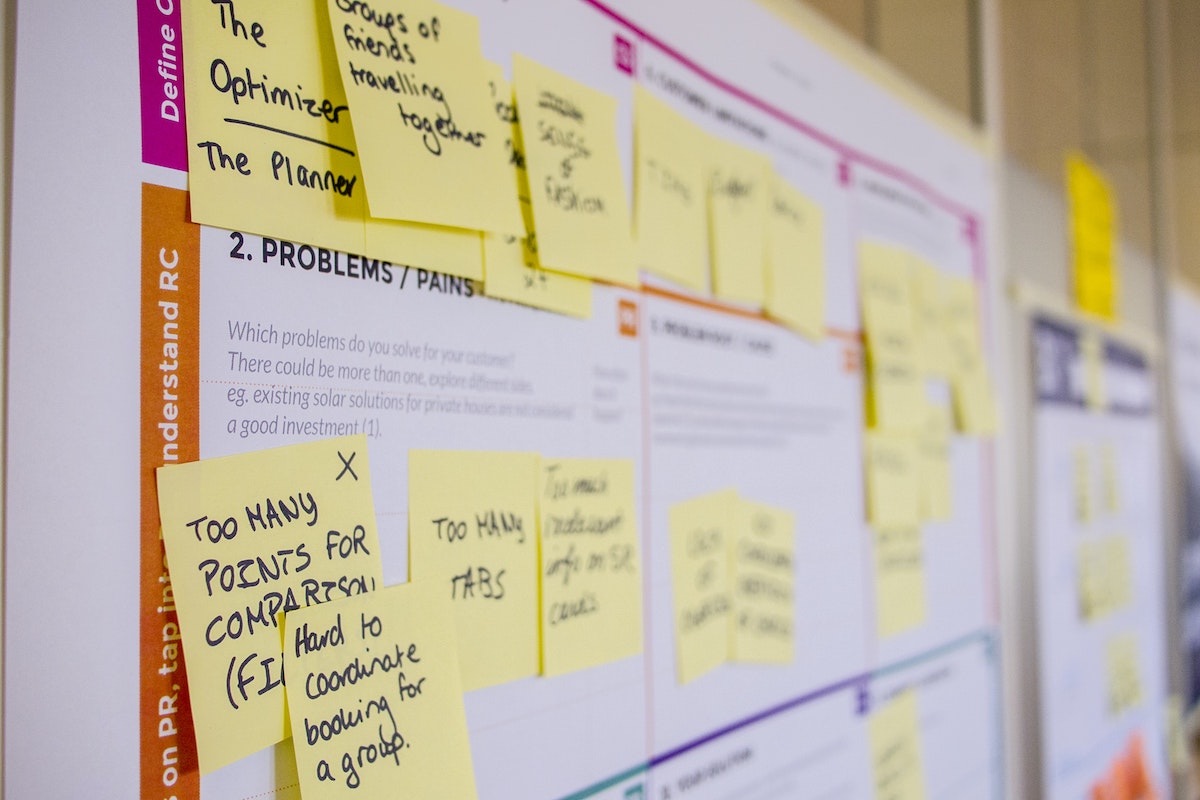
UX manager hiring is at an all-time high. Organizations can not hire UX managers fast enough, according to industry leaders. Understanding the implications of hiring this role is critical for leveraging the benefits an organization can gain from this title.
The role of a UX manager can provide significant business value for the company, or it can act as a facade and potentially weaken UX efforts. Aligning the current needs of your organization with the future growth trajectory that UX can provide is critical to getting the most from the UX leadership role. Organizations that position UX leaders with strategic priorities outperform those that define UX management as providing tactical value.
The UX job titles of “manager”, “lead”, or “director” can mean different things to different companies across different cultures. In the same way that the job title of UX designer has been misappropriated in many organizations, instead of focusing on strategizing and validating designs with users, UX designers are often forced to create wireframes or nice-looking UI’s without involving users. UX leaders can also be improperly positioned as tactical resources, delivering perceived value by doing the work of a UX designer.
UX leaders run a tight rope walk between tactical and strategic contributions. Companies that hire or promote UX leaders tend to either view the role as a tactical one that delivers assets, like wireframes. On the other hand, many more companies see UX leaders as strategic leaders that establish durable UX processes while providing vital strategic leadership.
Hiring UX Managers
Hiring decisions reveal a lot about what companies think about the UX manager role and how they perceive the value of managing UX programs. Two job posts found on Indeed.com illustrate the difference between tactical and strategic hiring. They also hint at the subtleties of contributing tactically and strategically as a UX manager.
UX Design Manager, Google (New York, NY):
As a User Experience (UX) leader, you help define and drive the future of Google design. You identify and set product strategy, envision complex UX ecosystems and inspire teams to push the boundaries of what’s possible. You possess a clear vision of the future of user experience and have the courage to pursue forward-thinking design.
Responsibilities:
- Provide leadership, direction, and mentorship for a team of UX Designers; lead creative and holistic thinking across diverse product releases, platforms, and devices.
- Deliver a UX vision, along with a plan for evolutionary, iterative updates, that actualize the larger vision over time.
- Build strong relationships and operating rhythms with leaders inside and outside their core product team to efficiently implement user experiences that are cohesive, inclusive, and well-informed.
- Foster Google’s culture and principles within the group, while setting new standards in execution and operational excellence.
- Be responsible for and effectively advocate for users in a fast-paced, corporate climate, imparting day-to-day design leadership that fosters a shared understanding of the user-centric intersection between design, content, business, and engineering.
Google has it right, by defining it strategically, but remember they started with co-founders who had taken usability courses in college and empowered UX culture from the start. Many companies still fumble with defining the true value UX leaders should bring. Compare the above strategic UX manager positioning to the following tactical role:
Manager, UX/UI Design at Tapestry (New York, NY):
This manager position will serve as the UI/UX Design lead for Tapestry’s Data Labs group, enabling the success of our people, our company and our brands through the design of human-centric, data-powered applications.
Responsibilities:
- Gather and evaluate user requirements in collaboration with product managers and engineers
- Illustrate design ideas using storyboards and process flows
- Develop UI mockups and prototypes that clearly illustrate how applications appear and function
- Lead product design review processes in partnership with product management
- Create a scalable set of design standards and strategies to be used across the team and company
- Partner with brand stakeholders to conduct usability testing and user feedback sessions
- Apply modern design-led thinking best practices to Data Labs products
In their job posting, Tapestry regards their UX manager role as output-oriented (wireframes, mockups, design reviews) as opposed to setting up durable processes and practices that can produce strong UX work from UX designers– who typically do UI mock-ups and storyboards.
Should UX managers contribute tactical value?

UX managers can contribute tactical value, especially if scaling up a new UX team or organizational effort. In my experience helping clients to hire leaders, I advocate some involvement in tactical output, if nothing else to stay relevant, and avoid the disconnectedness that occurs when solely attending meetings all day long. However, the hiring intention should clearly articulate the longer term and larger role of building UX capacity as in the Google job description example. Otherwise, if a UX manager largely focuses on generating deliverables, it may be detrimental to their ability to grow the cultural aspects of UX that bring an organization together to realize the value design-led organizations offer the bottom line.
According to studies conducted between design-led and non-design led organizations, Forrester Research and Adobe found:
“Design leaders know that research and the ability to deeply understand the customer are important. They also know the importance of disseminating insights to shape overall strategy and implementation”. (Design-Led Firms Win the Business Advantage, 2016).
By focusing largely on tactical outputs for a manager-level role, an organization can miss the important job a UX manager ought to perform–create a culture of UX based on strong processes and embedded UX/CX strategy. UX managers can help guide tactical delivery while having an equal hand in strengthening strategic design leadership efforts.
What do UX managers do?
One of the biggest misconceptions of UX managers is to see them as a role that manages the literal product, service, or experience deliverables. Instead, UX leaders are better positioned if they are responsible for developing a strong UX process, connecting tactical to strategic initiatives. UX process weakness is recognized by multiple industry studies as a defect in UX management and UX design culture building.
- 40% of UX professionals said their organization had no defined UX process (Forrester 2015)
- 50% of organizations support their UX teams (NN Group industry-wide survey, 2017)
- 55% of organizations said they had a set of UX/CX principles (Forrester global survey 2014)
To improve UX process improvement, UX managers require fluid movement between three audiences: the organization’s stakeholder teams, their UX team, and the end-users of the design. Let’s explore the three audiences UX managers need to be working with at all times:
Audience 1: Stakeholders: Cross-departments and Senior Management

UX leaders ultimately connect UX efforts to stakeholder demands, needs, and priorities. UX managers need to engage stakeholders in the UX process, deliverables, and activities.
For example, take a typical deliverable process: Customer Journey Mapping. If a UX manager creates a journey map as a visual (the beautiful journey map itself) and then delivers that to the organization, this means journey mapping was created with a tactical approach. Namely, the map was created by UX pros, without the process of discovery of customer needs by the wider organization. Instead, if the UX manager involves stakeholders by hosting a series of journey mapping workshops, allowing non-UX people to contribute, share their unique needs and break down misunderstandings between organizational units, a UX manager can reap a greater reward from the journey mapping process: buy-in, collaboration and socializing user pain points across internal channel-oriented decision-makers.
Audience 2: Employees: UX teams

UX leaders champion their teams, defend them, and create focus so UX designers and researchers can thrive. In UX Design this means advocating for the “U” in UX: understanding users. UX Designers need access to their users. This means UX managers help their team by advocating for user research (testing and field interviews) in scheduling, budgeting and prioritizing this critical activity with management.
In our above Journey Mapping example, if an organization tries to define customer pain points solely from an internal perspective, it can miss out on the credibility and validity gained from learning from customers directly. Journey mapping requires gathering actual insights from user research (field interviews). Skipping user research by assuming UX teams create wireframes and pretty UI’s, and can interpret customer needs without interviewing or observing customers in action, is a symptom of a poor understanding of UX process. Here a UX manager can provide direction. By advocating for conducting user research, a UX manager can empower her team to go beyond internally generated personas and journey maps, instead, reaching the true voice of the customer.
Audience 3: Customers: end-users

UX leaders keep their engineering, product development, and marketing organizations obsessed with customer-centric design. This means UX managers are bringing designers closer to customers while bringing customer insight, pain, and opportunity to their organizations.
Continuing with our journey mapping example above, a UX manager functioning strategically will have established a regular UX research practice. Product management, Marketing and Engineering will all be anticipating and expecting evidence-based UI/ UX recommendations from the UX team. Decisions will follow user behavior profiling and validating designs with end-users will provide the impetus for MVP’s (minimum viable product) or Lean UX prototypes. When the Journey Mapping process is initiated, a UX manager can help guide expectations about setting priorities and owners for journey mapping process outcomes. In addition, she can provide credibility to the journey mapping workshop by inviting the right stakeholders and allowing field studies (user research) to inform the understanding of channel or touchpoint optimization and design.
Conclusion
Instead of seeing a UX manager as a senior-level designer, someone in a UX leadership role should be understood as a catalyst to an organization gaining added benefits from the newer trend of a design-led culture. Treating a UX manager as a babysitting role for UI development misses the strategic function this important role can play in your organization. Instead, UX managers need a remit where strengthening the organization’s UX process, team, and culture can continue the delivery of business value and long-term ROI from UX activities.